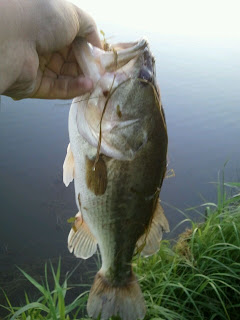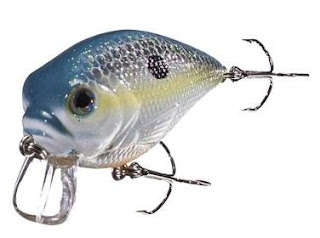When approaching a new lake one
of the key things that any angler should try to accomplish, besides the obvious
of catching fish, is to get an understanding of the lay of the land. What type of cover does it have on the
shoreline, where are the drop-offs at if there are any, where is the isolated
underwater structure? My success on the
water relies heavily on these features and helps me solve one part of the
riddle as to where bass are hiding.
When my Dad and I fished together
when I was younger, I couldn’t tell you how many times he would let me know as
we are fishing….”hit that spot, there is a dropoff there”….”hit that pocket,
there is a pile of rocks 4 feet down”.
How did he know all of this?
Over the years I have started to understand how this was done and there
are four things that allow that to happen…
1)
Search baits
2)
A sensitive rod
3)
Fan casting
4)
Slow down and pay attention!
In my case I would classify
search baits as anything that allows you to learn the bottom structure of the
lake. Crankbaits, jigs, weighted texas
rigs, Carolina rigs, and other similar baits all allow you to gain instant
feedback as to what is lurking beneath the water. They will be your depth finder and structure
scan if you learn how to use them right.
Last year I was fishing a local
pond that I have been fishing for quite some time. I wasn’t getting bit that day and decided to
walk the pond until I found some fish.
Well, I got to the one side of the pond that I rarely hit because of my
lack of catching in that area and decided to throw on a crankbait since the
weeds were receding. Threw it out,
brought it back….and just fan casted the area.
On my third cast about 10 feet out from shore I felt my crankbait rattle
against a rock pile….bingo! Next cast,
brought it over the rock pile and WHAM…4 pounder. Almost every fish the next several casts
were hanging right before or on top of that rock pile. Isolated cover can be a magical thing…and
when you find it you can almost bet money that there will be fish there.
Last night, I went to a new
forest preserve lake that is known for having some good fishing. Had no clue where to start so I decided to
start at the first spot I found. First
thing that I noticed….a stump sticking out of the water along with a brush pile
in the water to the left and right of me.
The last thing I noticed was the rock lining the bank. As soon as I see rock on a bank my decision
is always towards a texas rig or a crankbait.
I threw out a texas rig to the left towards one of the brush piles. Dragged it through and I could immediately
start feeling sparse rock on the bottom.
Made another cast just to the right of my last cast and started to find
heavier sections of rock. Then
eventually I was lifting my bait higher off the ground because it got stuck in
some limbs or chunks of wood from an underwater bush. Wouldn’t you know it, after popping it free
from all of the junk down there….fish on!
I ended up pulling four bass off of that spot in a matter of 20 minutes.
When you can unlock the secrets
of newer water, the higher chance you have of catching and not being skunked out
on the water. So always have something
tied on to allow you to search the bottom and find out what the fish are
relating to…that’s the name of the game!
Tight Lines,
Fluke













































